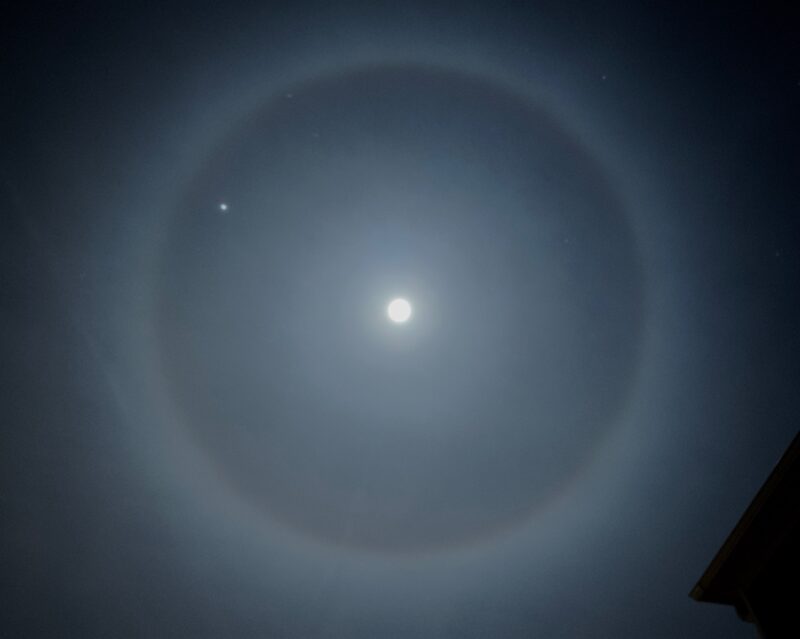
The crest of the November 2023 full moon will fall at 3:16 a.m. CT (9:16 UTC) on Monday, November 27. So – for the Americas – the fullest moon will come overnight on Sunday, November 26. And the fullest moon for Asia will fall on November 27. But all of us will see a bright, nearly full moon this weekend. As a bonus, this weekend’s moon is near the bright planet Jupiter in the night sky.
On the night of full moon – November 26-27 – the bright, round full moon will be climbing in the east, as night falls. And we’ll all find the moon on both Sunday and Monday nights glowing high in the south near midnight and dropping low in the west near sunrise before dawn.
Full-moon is a whole-Earth event. And every full moon is opposite the sun, rising when the sun sets and setting when the sun rises. At full moon, the sun, Earth, and moon form a line in space, with Earth in the middle. It’s at this time that the moon’s fully lighted hemisphere – its day side – faces Earth most directly.
And Jupiter? It’s no accident this mighty planet is near this month’s full moon. Earth passed between Jupiter and the sun in November 2023. A full moon is opposite the sun. And Jupiter was opposite the sun last month, at its opposition. So, as Earth and mighty Jupiter have moved on in their orbits around the sun, Jupiter is still nearly opposite the sun as seen from Earth. So Jupiter and this weekend’s full moon appear together in the sky.
The 2024 lunar calendars are here! Best Christmas gifts in the universe! Check ’em out here.
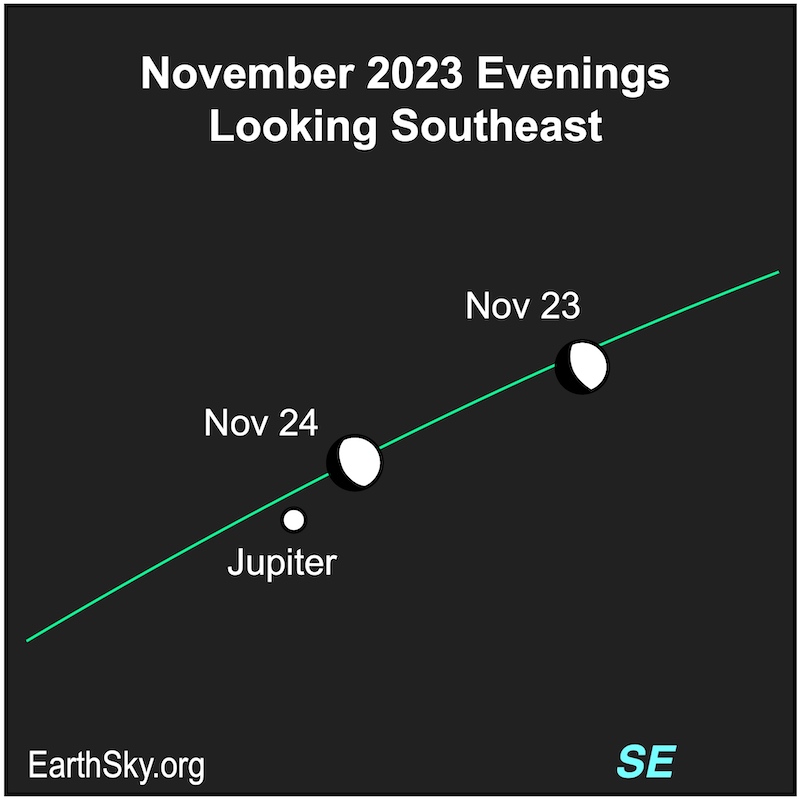
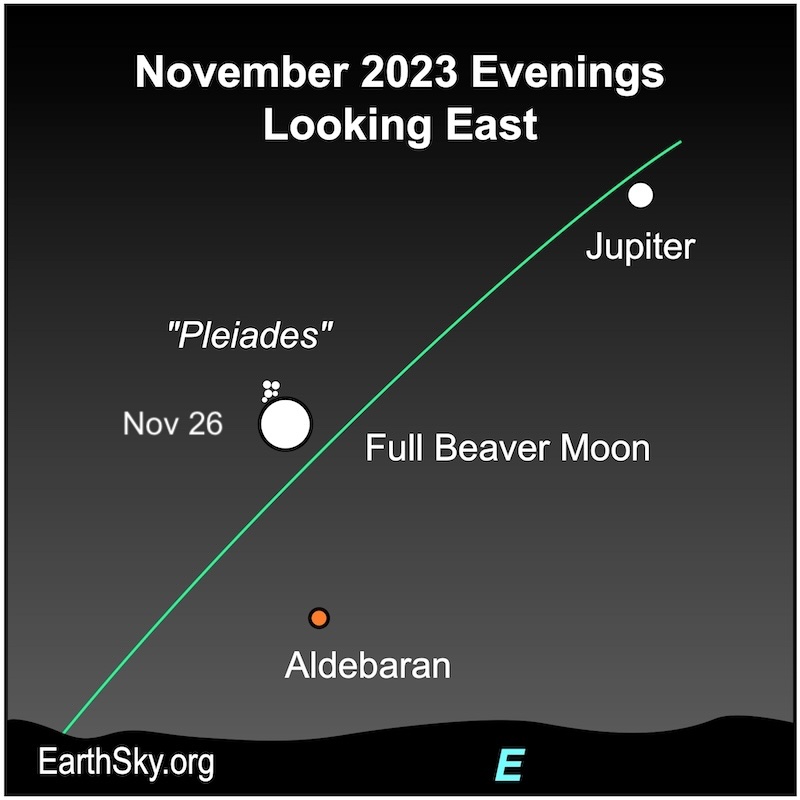
November full moon is Beaver or Frosty Moon
All the full moons have popular nicknames. If the full moon in November falls before November 7, it’s called the Hunter’s Moon.
Otherwise, as in 2023, you can call November’s full moon the Beaver Moon, or Frosty Moon. In November, North American beavers are preparing their dens – and stocking up on food – for the coming cold months.
We also hear the name Digging Moon for this November full moon, because of the last chances for seasonal foraging by forest animals.
The moon’s path across the sky
In the Northern Hemisphere, the sun travels across the southern sky each day in a short, low arc. So the full moon, being opposite the sun in the sky, travels in a long, high arc across the night sky. Now consider the moon’s path six months ago or six months from now. A May full moon travels in a short, low arc, while the May sun moves in a long, high arc. See? At full moon, the sun and moon are opposite each other in space.
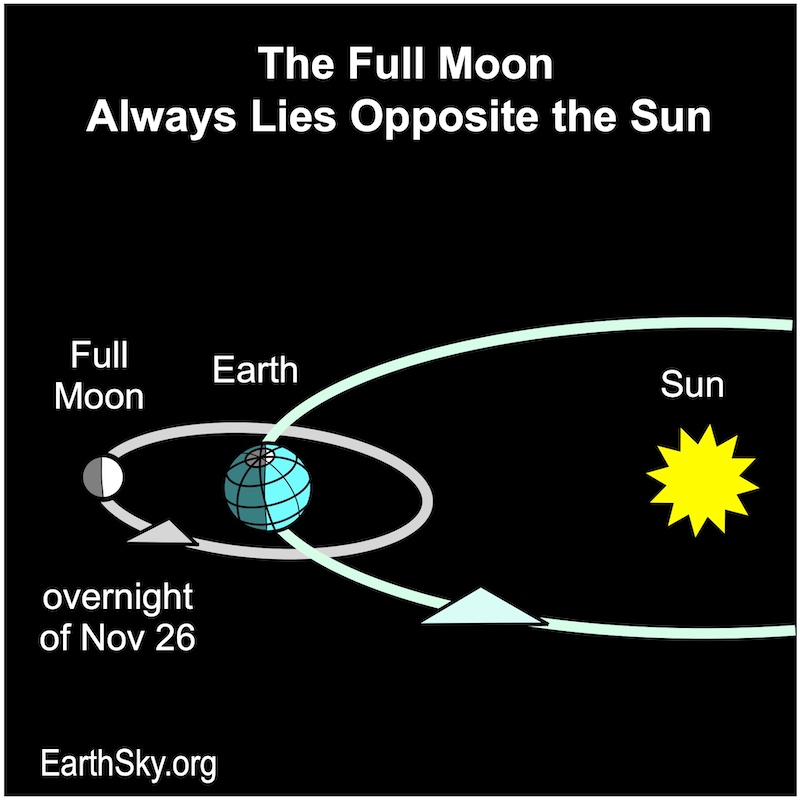
Why is the full moon so bright?
All full moons are bright. And their strong glow lightens the sky enough to blot out all but the bright planets and brightest of stars.
There are two major reasons the full moon is so bright. First and most obviously, a full moon isn’t a point of light, like a star or a planet. It covers a much-larger area of our sky, and so reflects more of the sun’s intense light. But secondly, and most importantly, the sun is so bright. It’s some 400,000 times that of the moon. And moonlight is just reflected sunlight. So the moon isn’t really bright in and of itself. In fact, the moon’s surface has a relatively low reflectivity, similar to that of asphalt.
If the moon had a reflectivity matching that of snow, the full moon would be over five times brighter!
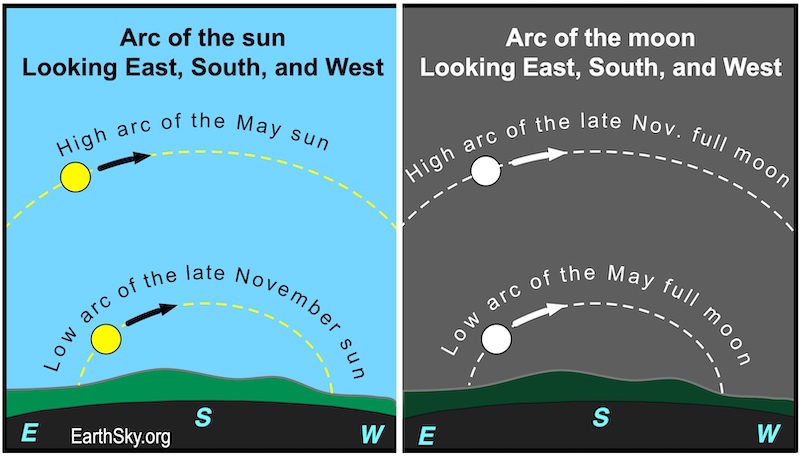
November full moon in Taurus
The November full moon can lie in front of one of three constellations of the zodiac. Most years, as it does this year, it falls in Taurus the Bull. But it can also be in Aries the Ram as it will be in 2025.
Very infrequently, November’s full moon lies in the sprawling constellation just southwest of Taurus, called Cetus the Whale.
The moon is roundest on the day that it’s full. But the day before and after, it appears almost, but not quite round and full in our sky.
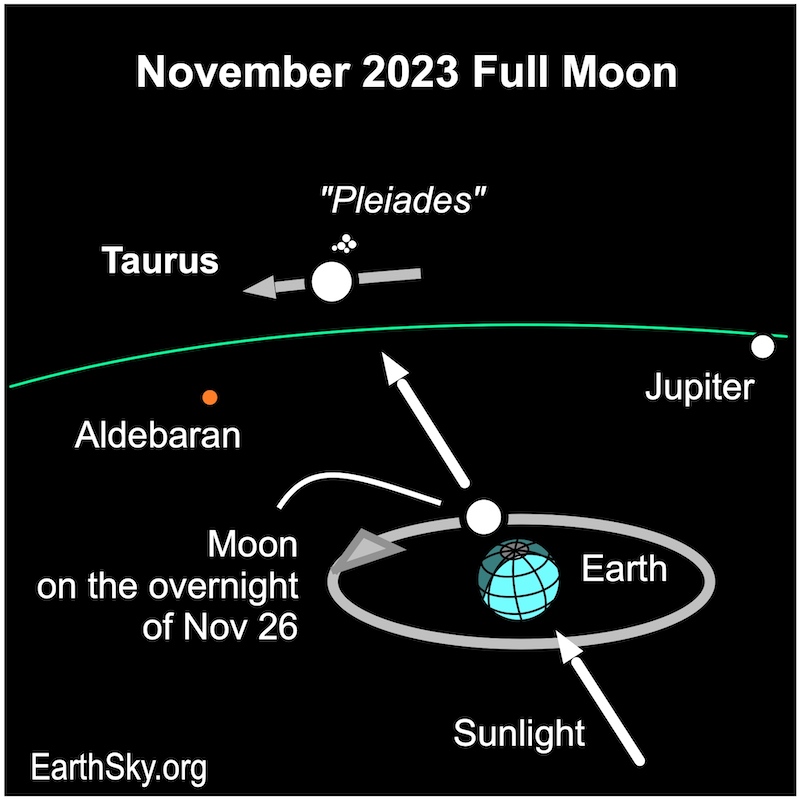
Bottom line: The November full moon will fall overnight on November 26-27, 2023. Bright Jupiter will be nearby. And the Pleiades star cluster will lie in the moon’s glare.
The post November full moon and Jupiter this weekend first appeared on EarthSky.
0 Commentaires